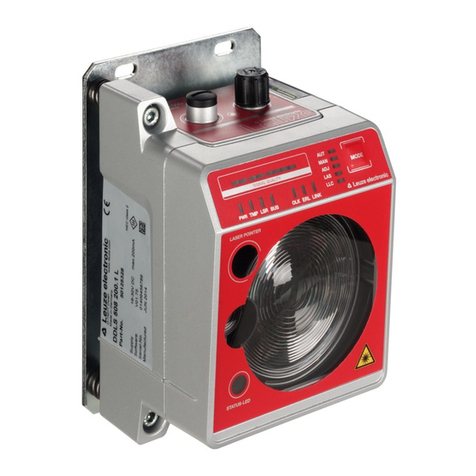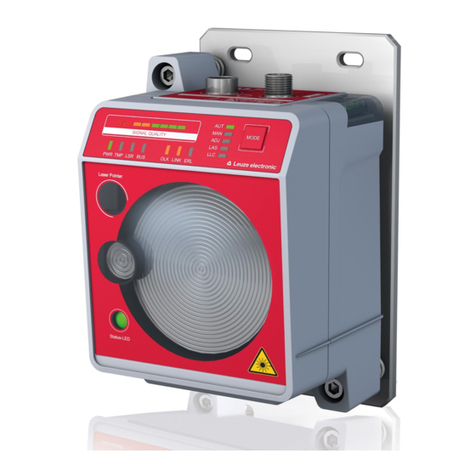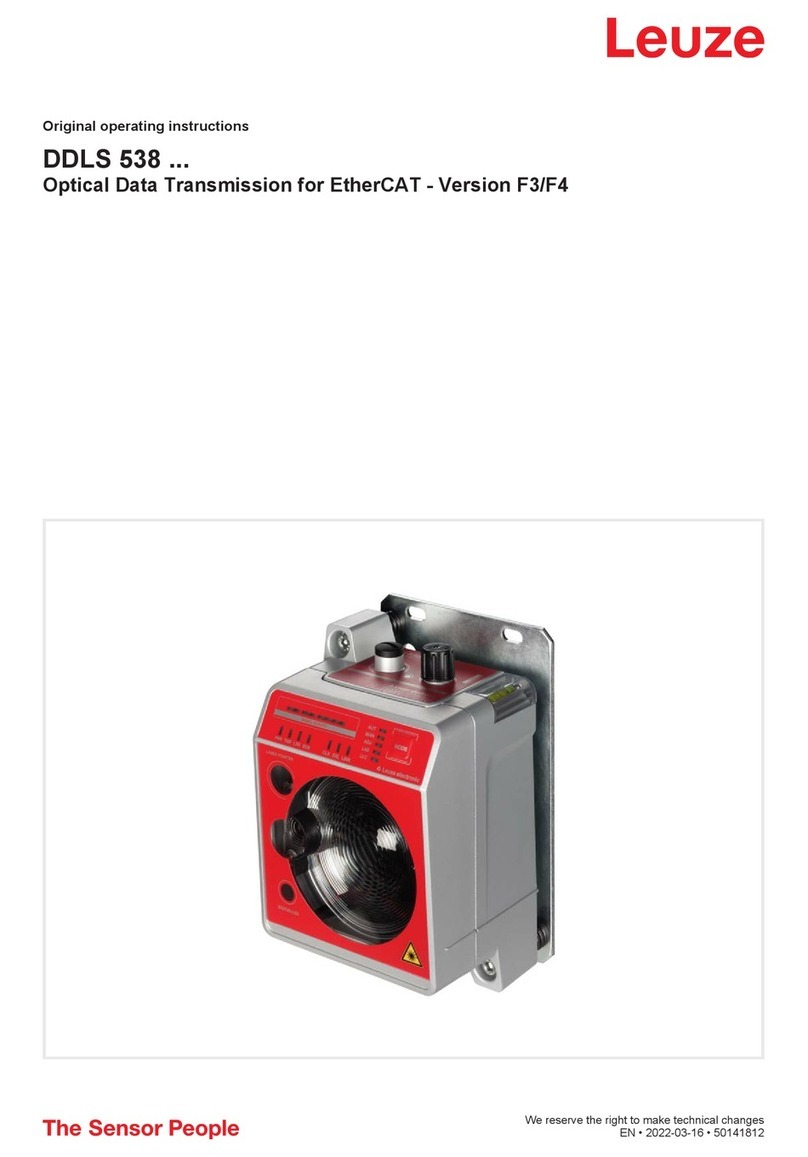
Table of contents
Leuze electronic GmbH + Co. KG DDLS 508i 3
Table of contents
1 About this document ............................................................................................5
1.1 Used symbols and signal words ............................................................................................. 5
2 Safety .....................................................................................................................6
2.1 Intended use ........................................................................................................................... 6
2.2 Foreseeable misuse ............................................................................................................... 6
2.3 Competent persons ................................................................................................................ 7
2.4 Disclaimer ............................................................................................................................... 7
2.5 Laser safety notices................................................................................................................7
3 Device description ..............................................................................................11
3.1 Device overview....................................................................................................................11
3.1.1 General information...........................................................................................................11
3.1.2 Performance characteristics and delivery options............................................................. 12
3.1.3 Protocol-specific characteristics ........................................................................................13
3.1.4 Accessories .......................................................................................................................13
3.1.5 Operating principle ............................................................................................................14
3.2 Connection technology ......................................................................................................... 14
3.3 Indicators and operational controls....................................................................................... 15
3.3.1 Indicators and operational controls in the control panel .................................................... 15
3.3.2 Indicators in the optics area ..............................................................................................20
3.3.3 Indicators in the connection area ......................................................................................21
4 Mounting..............................................................................................................22
4.1 Mounting instructions............................................................................................................ 22
4.2 Mounting with alignment laser and level............................................................................... 23
4.2.1 Horizontal mounting (travel axis) with the alignment laser ................................................ 23
4.2.2 Vertical mounting (lifting axis) with the alignment laser.....................................................28
4.3 Mounting without alignment laser ......................................................................................... 30
4.3.1 Horizontal mounting (travel axis) without alignment laser .................................................31
4.3.2 Vertical mounting (lifting axis) without alignment laser......................................................32
4.4 Mounting tolerances of the devices ...................................................................................... 33
4.5 Mounting distance for parallel operation of data transmission systems ............................... 35
4.6 Mounting distance for parallel operation with AMS300/AMS200 laser measurement
systems................................................................................................................................. 36
4.7 Mounting distance for parallel operation with DDLS200 data transmission system ............ 36
4.8 Cascading (series connection) of multiple data transmission systems................................. 37
5 Electrical connection..........................................................................................38
5.1 Overview ............................................................................................................................... 38
5.2 POWER (supply voltage / switching input and switching output) ......................................... 39
5.3 BUS (bus input, Ethernet)..................................................................................................... 40
6 Starting up the device ........................................................................................41
6.1 Setting the operating mode................................................................................................... 41
6.2 Fine adjustment .................................................................................................................... 43
6.2.1 General procedure ............................................................................................................43
6.2.2 Fine adjustment with the single-handed adjustment (SHA) process................................. 43
6.2.3 Fine adjustment without the single-handed adjustment (SHA) process............................ 44































